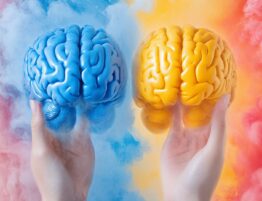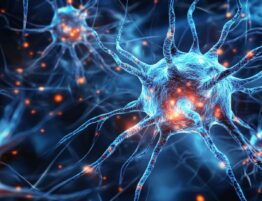Embark on a journey into the future of neurology with us. It unveils a landscape of unprecedented possibilities and transformative discoveries. The intersection of technology and clinical practice propels these fields into uncharted territories. Advancements in neuroimaging, AI, and molecular biology are revolutionizing. It concerns our understanding of the brain’s intricacies. It is unlocking new avenues for diagnosis, treatment, and prevention. The coming years hold promises of personalized therapies. There are interventions tailored to individual neurobiological profiles. They are from decoding complex neural circuits to harnessing the potential of neuroplasticity.
The evolving landscape reshapes how we approach neurological disorders. We delve into groundbreaking studies, innovative technologies, and collaborative initiatives. The future unfolds with the potential to decipher the mysteries of the brain. Also, it revolutionizes how we enhance cognitive function and treat neurological conditions. It ultimately improves the quality of life for individuals worldwide. Join us in exploring the limitless frontiers that await the future of neuroscience.
Future of Neurology: Main Trends
It holds tremendous potential driven by emerging trends. That reshapes the landscape of brain research, diagnostics, and treatment. The future of neurology borrows more effective therapies and earlier interventions. Also, it clasps a deeper understanding of the intricacies of the brain. It ultimately improves the lives of individuals affected by neurological conditions.
Precision Medicine in Neurological Care
It is reshaping neurological care by leveraging brain technology in the future. Such medicine promises transformative advancements. This approach tailors treatments to individual characteristics. It recognizes the unique genetic, molecular, and environmental factors contributing to neurological conditions. As we look to the future, the integration of brain technology emerges as a pivotal element:
- Genomic Insights: It allows identifying specific gene variations associated with neurological disorders. Understanding these variations aids in predicting disease risk, progression, and treatment response.
- Biomarker Discovery: Advancements in biomarker research enable the identification of specific molecules. They are indicative of neurological conditions. Biomarkers ease early diagnosis and monitoring, guiding precise treatment strategies.
- Tailored Therapies: Personalized treatment plans consider an individual’s genetic makeup and molecular profile. This approach minimizes the one-size-fits-all model, enhancing treatment effectiveness while reducing side effects.
- Predictive Analytics: Integrating machine learning and AI analyzes vast datasets. It predicts disease trajectories and treatment responses based on individual patient data. It allows for proactive and personalized interventions.
- Neurogenetics and Rare Disorders: Precision medicine is impactful in such disorders and conditions. Targeting specific genetic mutations opens avenues for innovative therapies and potential cures.
- Pharmacogenomics: Understanding how an individual’s genetic makeup influences drug metabolism. It helps customize medication regimens. Also, it optimizes efficacy and minimizes adverse reactions.
- Patient Stratification: Precision medicine enables the stratification of patients into subgroups by characteristics. It facilitates the development of targeted therapies for specific patient populations.
- Remote Monitoring and Wearable Technology: Integrating precision medicine with wearable technology. It allows continuous monitoring of neurological parameters. Real-time data collection contributes to personalized and dynamic treatment adjustments.
- Clinical Trials and Research Advancements: It tailors clinical trials based on genetic profiles. It enhances the likelihood of successful outcomes. Precision medicine accelerates research efforts, leading to the discovery of novel therapeutic targets.
- Ethical Considerations: Precision medicine raises ethical considerations. They are about privacy, consent, and the responsible use of genetic information. Striking a balance between innovation and ethical standards is crucial. It is vital to install these advancements responsibly.
Neurovirtual reality stands out as a transformative tool. It can potentially revolutionize the perception, diagnosis, and treatment of neurological conditions.
Integration of Artificial Intelligence (AI)
The integration of AI marks a pivotal advancement in neurological system care. It offers innovative solutions that enhance diagnostics, treatment strategies, and patient outcomes.
- Neuroimaging Analysis: AI algorithms analyze complex neuroimaging data. It aids in identifying subtle abnormalities. Also, it provides more accurate diagnostic insights for conditions. Among them are brain tumors, strokes, and neurodegenerative diseases.
- Predictive Analytics: AI-driven predictive models assess patient data to expect disease progression. It enables to intervene in treatment plans based on individual risk profiles.
- Precision Medicine: AI analyzes vast datasets, including genetic and molecular information. It helps to identify patterns and correlations that inform personalized treatment approaches. It facilitates the development of targeted therapies for neurological disorders.
- Natural Language Processing: It interprets valuable info from clinical notes and patient records. Also, NLP provides a comprehensive understanding of a patient’s neurological history.
- Remote Monitoring and Wearables: AI algorithms process real-time data from wearable devices. They are monitoring neurological parameters and alerting healthcare providers to changes. It enables timely interventions and adjustments in treatment plans.
- Automated Diagnostic Help: AI algorithms assist healthcare professionals in rapidly diagnosing neurological conditions. They are reducing the time needed for interpretation and enhancing diagnostic confidence.
- Virtual Neurological Assessments: AI facilitates virtual neurological assessments. It allows patients to perform remote evaluations. It mainly benefits continuous monitoring and follow-up care, enhancing patient accessibility.
- Drug Discovery and Development: AI accelerates drug discovery processes. It happens by analyzing vast biological datasets. AI identifies potential drug candidates and predicts their efficacy in neurological conditions. It expedites the development of novel treatments.
- Robotic Assistance in Surgery: AI-assisted robotic systems enhance precision in neurosurgical procedures. They provide surgeons with real-time feedback. Also, they improve the accuracy of interventions, ultimately leading to better patient outcomes.
- Continuous Learning Algorithms: AI systems learn and adapt based on new data. They are refining their capabilities. It ensures that neurological care benefits from ongoing advancements and evolving medical knowledge.
Neurovirtual reality emerges as a transformative tool within the realm of AI-driven advancements. It offers unprecedented possibilities for personalized and immersive neurological interventions.
Innovations in Brain Technology in the Future
Exciting prospects adorn the horizon of neuroscience. Emerging innovations promise to unravel the mysteries of the brain. It pushes the boundaries of our understanding and therapeutic capabilities. We envision the evolution of brain technology in the future. A groundbreaking integration of immersive experiences is set to redefine neurorehabilitation interventions. Advancements in non-invasive neurostimulation devices offer potential breakthroughs. It is for conditions like depression and epilepsy. Brain-machine interfaces continue progressing, allowing direct communication between the brain and external devices. We venture into a future where brain technology takes center stage.
Neural Interface Devices
NIDs stand at the forefront of futuristic technology. It facilitates direct communication between the brain and external devices. These cutting-edge interfaces promise revolutionary advancements in human-machine interaction. NIDs enable users to control prosthetics, computers, and other devices seamlessly. BCIs aim to enhance the lives of patients with paralysis or neurodegenerative disorders. The potential applications span cognitive enhancement, neurorehabilitation, and immersive virtual experiences. It is marking a transformative era of the future of neurotechnology. Their thoughts translate into actions with unprecedented precision and efficiency.
Advanced Brain Imaging
It heralds a new era in neuroscience. Advanced BI employs cutting-edge technologies to delve into the intricacies of the human brain. Techniques like fMRI and PET offer unprecedented insights into brain function. High-resolution imaging unveils dynamic neural processes. It is aiding in the early diagnosis and understanding of neurological disorders. These imaging modalities promise to unravel the mysteries of cognition, emotions, and behavior. It is from personalized treatment strategies to mapping neural connectivity. Advanced Brain Imaging is shaping the future of neuroscience. It unlocks realms of knowledge that were once beyond reach.
Neuro Virtual Reality: A New Therapeutic Horizon
Neuro VR emerges as a transformative frontier. It merges technology and neuroscience to pioneer innovative therapeutic interventions. This cutting-edge approach leverages immersive virtual experiences to impact brain function positively. Neuro VR holds promise in various applications:
- Neurorehabilitation: Such technology eases targeted motor skills, cognitive functions, and sensory integration rehabilitation. It offers new avenues for recovery after neurological injuries.
- Mental Health Interventions: It provides immersive exposure therapy for anxiety, PTSD, and phobias. Also, neuro-VR fosters a controlled environment for therapeutic interventions.
- Pain Management: Neuro VR techniques offer distraction and sensory modulation. It is potentially alleviating pain and discomfort for individuals with chronic pain conditions.
- Cognitive Training: Engaging cognitive tasks within virtual environments stimulates brain activity. It offers a dynamic platform for mental training and enhancement.
- Accessible Therapies: Neuro VR makes therapy more accessible. It allows individuals to engage in rehabilitative exercises and interventions, overcoming geographical barriers.
- Neuroplasticity Promotion: It may contribute to neuroplasticity. Also, to the brain’s ability to adapt and reorganize. It is potentially enhancing recovery and rehabilitation outcomes.
As technology advances, neuroviral reality stands poised to revolutionize neurotherapeutics. It offers a personalized and immersive approach to address neurological and psychological challenges.
Conclusion
Neuro VR emerges as a transformative force. It expands the horizons of therapeutic interventions in neuroscience. Its immersive applications hold the promise of personalized and accessible treatments. They will be helpful for every patient. The future of neurology represents a dynamic frontier. It unlocks unprecedented potential for improving brain function. Also, it enhances the well-being of individuals facing neurological challenges.
FAQ
What is precision medicine in neurological care?
Precision medicine in neurological care. It involves tailoring treatments to individual patient’s unique genetic, molecular, and environmental factors. Precision medicine aims for more personalized and effective interventions.
How does precision medicine impact the diagnosis of neurological disorders?
Precision medicine enhances diagnosis by utilizing advanced technologies. Among them are genomic profiling and biomarker discovery. They identify specific genetic variations and molecular indicators associated with neurological conditions.
Are there advancements in brain technology within precision medicine?
Yes, the integration of brain technology is advancing precision medicine. It offers innovative approaches to diagnostics and interventions.













Please, leave your review
Write a comment: